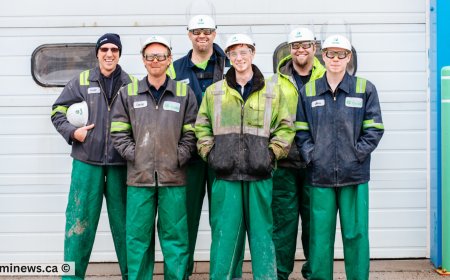Urban and land use planners Canada Immigration Pathways: Understanding Salaries, Work Roles, and Best Provinces
Welcome to the pathway to Canada immigration for skilled professionals and trade workers. This guide is specifically tailored for Urban and land use planners looking to work and settle in Canada, offering a deep dive into the essential aspects of immigration and employment in this field.
Introduction
Urban and land use planners play a crucial role in shaping sustainable communities and cities across Canada. In this article, we will explore the career and immigration prospects for individuals in the field of urban and land use planning, with a focus on the National Occupation Classification (NOC) code 2153. We will cover the profile description, main job duties, education and licence requirements, necessary skills, median age and retirements, salary details, as well as possible visa options for individuals looking to pursue a career in this rewarding profession. Let's delve into the exciting world of urban and land use planning in Canada.
What is the Profile Description of a Urban and land use planners as per the Canadian National Occupation Classification (NOC) Standards?
Urban and land use planners are professionals who are responsible for creating plans and proposing strategies to effectively manage land use, physical infrastructure, and necessary services for both urban and rural areas, as well as remote regions. They work for various organizations such as government agencies, land development firms, engineering companies, and consulting firms, or may choose to work independently as consultants.
What are the Main Job Duties of a Urban and land use planners in Canada?
- Compile and analyze data on various factors affecting land use, including demographics, economics, and sociological aspects
- Confer with a diverse range of stakeholders to develop land use plans, including government officials, developers, and community groups
- Prepare and present comprehensive land development concepts and plans for zoning, transportation, public utilities, and environmental protection
- Review and evaluate land development proposals, process permit applications, and administer zoning by-laws
- Formulate long-term objectives and policies for future land use and environmental protection, while supervising the work of planning technicians and technologists
What are the Education, Certifications, and Licensing Requirements to Work as Urban and land use planners in Canada?
To become an Urban and Land Use Planner, individuals must have a bachelor's degree in urban and regional planning, geography, architecture, engineering, or a related field. A master's degree in one of these disciplines may also be necessary. Membership in the Canadian Institute of Planners is typically required, and in some provinces, membership in a provincial planning institute may be necessary. Additionally, in Nova Scotia, New Brunswick, Quebec, Alberta, the Northwest Territories, and Nunavut, Urban and Land Use Planners are regulated. Some employers may also require certification in Leadership in Energy and Environmental Design (LEED) offered by the Canada Green Building Council.
What Essential Skills are Required for Urban and land use planners to succeed in Canada?
Urban and land use planners must possess a diverse set of skills in order to be successful in their profession. They are required to compile and analyze data on various factors affecting land use, confer with different authorities and interest groups to develop land use or community plans, and prepare recommendations for land development concepts including zoning, transportation, public utilities, parks, and agriculture. Additionally, planners must be able to prepare plans for environmental protection, present proposals to authorities and the public, evaluate development plans, process permits, and administer zoning by-laws. Long-range thinking and the ability to formulate objectives and policies related to future land use and environmental protection are also essential skills for urban and land use planners to have.
What is the Median Age and Retirement Age for Urban and land use planners in Canada?
It is not possible to determine the median age and average retirement age of skilled professionals working as Urban and land use planners as the data is not available. This suggests that there may be a wide range of ages within this profession, with individuals retiring at various stages of their career. The lack of specific data on age demographics in this field may indicate a lack of comprehensive research or reporting in this area. However, it is important for employers and policymakers to consider the age demographics of Urban and land use planners in order to develop effective strategies for attracting and retaining talent in this profession.
How many job openings exist for Other Urban and land use planners in Canada, and what's their provincial distribution?
Urban and land use planners play a crucial role in shaping the development and growth of communities. Currently, there are a total of 41 job openings for this profile in Canada. Among the provinces, British Columbia has the highest number of job openings with 25 positions available, highlighting the high demand for urban and land use planners in the region. Quebec follows with 6 job openings, showcasing opportunities for professionals in urban planning in the province. Saskatchewan has 4 job openings, Ontario has 3, and Nova Scotia has 2 job openings for urban and land use planners. Overall, British Columbia stands out as the province with the maximum job openings, while Nova Scotia has the minimum number of job openings for this profile in Canada.
What is the hourly wage or salary of Urban and land use planners in different Provinces of Canada?
Urban and land use planners play a crucial role in shaping the development of communities and cities across Canada. When it comes to wages, there is a significant variation among provinces for professionals in this field. In British Columbia, the wages for urban and land use planners range from a low of $29.23 to a median of $39.56 and a high of $48.08. Moving to Alberta, the wages are notably higher with a low of $30.00, a median of $52.52, and a high of $64.90. Saskatchewan offers lower wages compared to other provinces, with a low of $13.98, a median of $37.74, and a high of $45.62. In Ontario, urban and land use planners can expect a wage ranging from $20.51 to $39.49 at the median level and up to $59.00 at the high end. Quebec also offers competitive wages with a low of $21.23, a median of $37.19, and a high of $56.85. Overall, it is evident that urban and land use planners can potentially earn higher wages in Alberta and Quebec compared to other provinces in Canada.
What are the various visa options available for Urban and land use planners migrating to Canada?
Urban and land use planners are currently in high demand in Canada and are eligible for Category based Express Entry Invitation draws for Canadian PR under STEM Occupations Category. Express Entry is a system used by the Canadian government to manage applications for permanent residence for skilled workers. Additionally, the Provincial Nominee Programs and Employer Sponsored Work Visas are also available options for Urban and land use planners to directly apply under. Other visa options may also be open for this profile. To learn more and discuss all the options in detail, you can book an appointment with our professionals today.
Have Questions or Need Assistance?
If you have any queries or require assistance with your immigration plans, we're here to help. Our experienced immigration consultants are ready to provide personalized guidance tailored to your specific needs.
Don't hesitate to reach out and schedule an appointment today. Whether you're seeking clarification on immigration processes, exploring visa options, or need support with documentation, we're dedicated to assisting you every step of the way.
Book an appointment with our team to discuss your immigration goals and receive expert guidance for your journey to Canada.
What's Your Reaction?
 Like
0
Like
0
 Dislike
0
Dislike
0
 Love
0
Love
0
 Funny
0
Funny
0
 Angry
0
Angry
0
 Sad
0
Sad
0
 Wow
0
Wow
0




































































